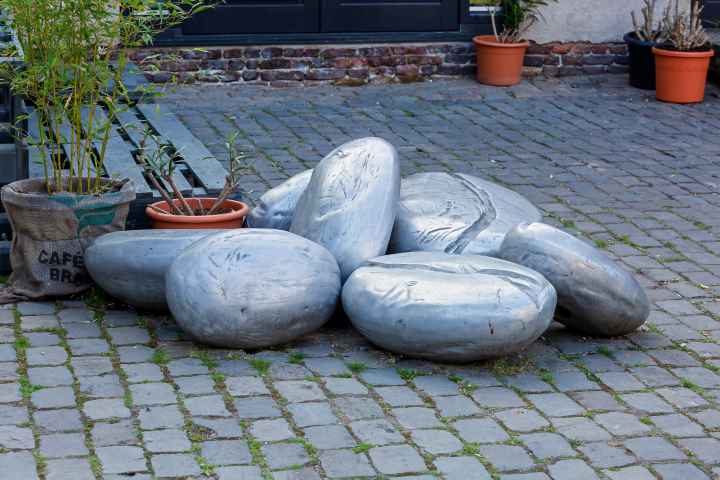Coffee beans
Keizerstraat
Coffee beans – Anna Berendsen
If you walk from Dominicanenplein into Keizerstraat, you will see a small clearing on the left. It is called the Bartelsplaats. In the 19th century, this was the site of Bartels Maas, a wholesale business in colonial spices where, among other things, coffee beans were mixed, ground and packaged. The large, aluminium coffee beans you will find lying on the Bartelplaats refer to the activity that took place there at the time.
The artist: Anna Berendsen
It is not surprising that the artist born in Venlo (Anna Berendsen, 1936) made the artwork of the coffee beans. She is a descendant of the Bartels family, whose company, a wholesaler in colonial spices, is referred to. Berendsen makes spatial work, such as installations, but also drawings, paintings and collages of various materials.
Everyday news is often a source of inspiration for her. She once said that she needed a reason to make something, for example a painting. She gives the image meanings, often multiple and layered, enigmatic, but at the same time familiar and known. According to her, a painting must open itself. In her work, she gives the viewer clues, elements with which the viewer can associate, think, feel, experience. Images, whether or not worked out in detail, evoke their own thoughts.
Keizerstraat
The Keizerstraat is also called ‘Floddergats’ by the people of Venlo. That was back in the days when the part of the street between Ursulastraat and Nieuwstraat was still a narrow, muddy corridor. The street was constructed in 1652 and served from the Keulsepoort as access to the cloister quarter and the cloisters Mariaweide and Trans-Cedron located there. Originally, the street was called Kloosterstraat, although in the 17th century it was also called Enge Begijnengang. This changed after Emperor Napoleon and his retinue allegedly rode through the street in 1804. His horse supposedly lost a horseshoe there, and that horseshoe has always been preserved.
In the last decades of the 20th century, Keizerstraat was quite rundown and there was a lot of drug abuse and violence. The Dominican Fathers decided to limit this nuisance by placing a fence along the side of the Dominican chapel. Partially due to the efforts of housing corporation Woonwenz and a few entrepreneurs, the Keizerstraat has now changed into a pleasant and lively street where people like to walk around and stroll.



